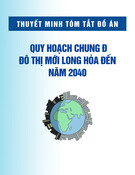
Original
article
Nutrient
release
dynamics
in
decomposing
leaf
litter
in
two
Mediterranean
deciduous
oak
species
I
Santa
Regina
M
Rapp
A
Martin
JF
Gallardo
1
IRNA/CSIC,
Cordel
de
Merinas
40,
37008
Salamanca
Sperin;
2
CEFE/CNRS,
BP
5051,
Montpellier
34033,
France
(Received
16
December
1996;
accepted
23
May
1997)
Summary - The
release
and
dynamics
of
macronutrients
from
decomposing
leaf
litter
were
determined
for
two
deciduous
oak
species:
one
in
Spain,
Quercus
pyrenaica,
growing
on
a
humic
Cambisol
(Sol
brun forestier)
and
the
other
in
France,
Q
lanuginosa,
on
a
rendsic
Leptosol
(Rendzine).
The
same
pro-
cesses
were
studied
after
leaf-litter
exchanges
between
the
French
stand
and
a
Spanish
stand.
Nylon
litter
bags
(1
mm
2
mesh),
containing
10
g of leaves,
were
placed
in
five
stands
(four
in
Spain
and
one
in
France)
and
collected
every
2
months
when
they
were
weighed
and
analysed
for
N,
P,
Ca,
Mg
and
K.
The
mean
amount
of
nutrients
in
the
decomposing
leaves
decreased
over
the
36-month
period.
The
four
Q
pyrenaica
stands
were
classified
into
two
groups
involving
different
nutrient
release
pro-
cesses,
without
any
relation
to
yearly
litterfall.
For
the
Q
lanuginosa
stand,
the
results
obtained
were
similar
to
those
for
one
of
the
Q
pyrenaica
groups.
Similar
nutrient
release
processes
occurred
in
the
litter-bags
collected
from
native stands
and
after
exchanges
between
the
two
species,
with
a
quick
release
of
K,
followed
by
Mg
and
P.
Higher
Ca
accumulation
was
noted
for
the
Q
pyrenaica
litter
as
compared
to
Q
lanuginosa
litter.
For
N,
the
results
were
very
different
between
the
two
species
and
the
two
locations.
litter
decomposition
/
litter
bags
/
nutrient
release
/
oak
coppice
/
Quercus
pyrenaica
/
Q
lanuginosa
Résumé -
Dynamique
de
libération
des
bioéléments
de
feuilles
en
décomposition
de
deux
taillis
méditerranéens
à
chênes
caducifoliés.
La
dynamique
qualitative
et
quantitative
de
la
perte
d’élé-
ments
majeurs
à
partir
de
litières
de
feuilles
en
décomposition
a
été
établie
pour
deux
espèces
de chênes
caducifoliés,
l’une
en
Espagne :
Quercus
pyrenaica,
implantée
sur
Cambisols
humifères
(sols
brun
forestier),
l’autre
en
France :
Quercus
lanuginosa,
implantée
sur
Leptosols
rendsiques
(Rendzines).
Les
mêmes
mécanismes
ont
été
étudiés
après
échange
de
litières
entre
la
station
française
et
une
station
espagnole.
Des
sachets
de
nylon,
de
maille
de
1
mm
2,
contenant
chacun
10
g de
feuilles
ont
été
déposés
dans
cinq
stations
(quatre
en
Espagne
et
une
en
France)
et
des
échantillons
récoltés
tous
*
Correspondence
and
reprints
Tel:
(34)
23
21
96 06;
fax:
(34)
23 21
96 09;
e-mail:
ignac@gugu.usal.es

les
2
mois.
Sur
ces
échantillons
on
a
dosé :
N,
P,
Ca,
Mg
et
K.
Les
teneurs
en
éléments
majeurs
des
feuilles
diminuent
au
cours
des
36
mois
d’étude.
Les
quatre
stations
à
Q
pyrenaica
peuvent
être
regroupées
en
deux
groupes,
indiquant
des
processus
de
décomposition
différents,
sans
relation
avec
les
quantités
de
litière
arrivant
annuellement
au
sol.
Pour
Q
lanuginosa,
les
résultats
étaient
similaires
à
l’un
des
deux
couples
espagnols.
Au
cours
de
l’expérience
d’échange
de
litières,
des
dynamiques
semblables
ont
été
observées
dans
les
stations
d’origine
des
litières
et
après
échange.
K
est
libéré
le
plus
rapidement,
suivi
de
Mg
et
de
P.
On
a
trouvé
une
accumulation
relative
de
Ca
dans
les
litières
de
Q
pyrenaica,
supérieure
à
celle
des
litières
de
Q
lanuginosa.
Concernant
l’azote
les
résultats
sont
variables,
à
la
fois
entre
les
deux
espèces
et
entre
les
deux
localités.
décomposition
de
la
litière
/
perte
d’éléments
/
décomposition
en
sachets
/
taillis
/
Quercus
pyrenaica
/
Quercus
lanuginosa
INTRODUCTION
Release
of
nutrients
from
decomposing
lit-
ter
is
an
important
internal
pathway
for
nutri-
ent
flux
in
forested
ecosystems.
Nutrients
may
be
released
from
litter
by
leaching
or
mineralization
(Swift
et
al,
1979).
Nutrient
release
from
decomposing
litter
affects
ecosystem
primary
productivity
(Blair,
1988),
since
these
nutrients
thus
become
available
for
plant
uptake
and
are
not
lost
from
the
system.
The
rate
at
which
nutrients
are
released
depends
on
several
factors
as
indicated
by
Seastedt
(1984):
chemical
composition
of
the
litter,
structural
nature
of
the
nutrient
in
the
litter
matrix,
microbial
demand
for
the
nutrient,
and
availability
of
exogenous
sources
of
nutrients.
Litter
release
factors
are:
litter
quality
(Fogel
and
Cromack,
1977;
Aber
and
Melillo,
1980;
Berg
and
Staaf,
1980,
1981;
Melillo
et
al,
1982),
macro-
and
microclimatic
variables
(Meentemeyer,
1978),
microbial
and
faunal
biotic
activity
(Reichle,
1977).
Several
authors
have
defined
litter
quality
in
terms
of
initial
N
concentrations,
the
C/N
ratio,
initial
lignin
concentrations,
and
the
lignin/N
ratio.
Litter
quality
affects
not
only
the
rates
of
mass
loss,
but
also
the
patterns
and
rates
of
nutri-
ent
immobilization
or
release.
Climatic
fac-
tors
influencing
litter
decomposition
rates
include
soil
temperature
(Lousier
and
Parkinson,
1976;
Heal,
1979;
Edmonds,
1980;
Moore,
1986;
Witkamp,
1996),
and
soil
moisture
(Hayes,
1965).
Soil
fertility
is
directly
related
to
the
activity
of
decom-
posers
(Bocock
and
Gilbert,
1957;
Witkamp
and
Van der
Drift,
1961).
In
nature,
it
is
often
difficult
to
separate
the
effects
of
individual
factors.
Both
inter-
and
intra-site
differences
in
decomposition
rates
could
reflect
variations
in
several
of
the
above-mentioned
types
of
factors.
Element
release
is
above
mass
loss
if
biotic
mineralization
processes
are
not
nec-
essary
or
if
the
nutrients
are
not
structurally
bound
in
the
litter;
it
is
below
mass
loss
if
the
nutrients
are
in
short
supply
relative
to
microbial
demand
and
then
accumulate
in
the
litter
during
early
phases
of decompos-
tion
(Berg
and
Staaf,
1981).
The
aim
of
this
study
was
to
compare
the
release
of
nutrients
from
decomposing
litter
of
two
species
of
Mediterranean
deciduous
oaks
(Q
pyrenaica
Willd
and Q
lanuginosa
Lamk),
characteristic
of climax
formations.
The
stands
are
located
on
forest
plots
dif-
fering
in
their
geological
substrates
and
microclimates.
A
reciprocal
exchange
of
leaves
from
the
two
species
between
two
stands
was
also
studied
in
order
to
deter-
mine
the
effects
of
climatic
and
leaf quality
factors
(Martin
et
al,
1994).

MATERIAL
AND
METHODS
Site
description
The
four
Q
pyrenaica
forest
plots
are
situated
on
the
northern
slope
of
the ’Sierra
de Gata’
mountains
in
the
southwestern
part
of
Salamanca
province
(Spain).
The
Q
lanuginosa
plot
is
in
the
Causse
Mejean,
north-west of
Montpellier
(France).
The
climatic,
edaphic
and
stand
data
are
given
in
table
I.
There
was
a
rainfall
gradient
between
Navasfrías
and
Fuenteguinaldo.
The
3
years
of
the
study
of
decomposition
were
considered
dry,
since
mean
precipitation
was
10-40%
lower
than
the
general
averages.
The
annual
mean
precipi-
tation
was
very
similar
between
La
Viale
and
El
Payo
(Moreno
et
al,
1993).
However,
although
there
were
no
great
dif-
ferences
in
climatic
factors
or
elevation
between
the
four
Spanish
plots
and
the
La
Vialle
plot,
there
was
a
notable
lithological
difference.
The
latter
stand
is
located
on
dolomitic
calcareous
bedrock,
with
a
rendzic
Leptosol,
whereas
the
four
Spanish
forest
areas
lie
on
acid
bedrock
(granite
or
shale),
producing
humic
Cambisols
(FAO,
1989).
Tree
densities
varied
from
406
trees
ha-1
,
with
a
mean
diameter
of
25
cm
at
El
Payo,
to
2
100
trees
ha-1
,
with
a
mean
diameter
of 9.5
cm
at
La
Vialle,
reflecting
different
coppice
managements.
The
following
annotation
is
used
for
the
plots:
Navasfrías:
NF;
El
Payo:
EP;
Villasrubias:
VR;
Fuenteguinaldo:
FG;
La
Viale:
LV.
Local
leaf
litter
In
each
of
the
five
plots
studied
(four
in
the
’Sierra
de
Gata’,
Province
of
Salamanca
and
one
in
LV,
near
Montpellier),
54
nylon
litter
bags

with
1 mm
2
mesh
and
a
surface
area
of
400
cm
2
(each
containing
10
g
of
leaves
collected
from
each
site)
were
placed
over
the
litter
in
three
dif-
ferent
locations
on
each
plot.
The
litter
contained
in
the
bags
had
been
dried
at
room
temperature,
the
remaining
humidity
being
determined
by
dry-
ing
at
80 °C
until
constant
weight
was
achieved.
Every
2
months,
beginning
in
February
1990,
three
bags
per
plot
(one
from
each
location)
were
collected
over
a
period
of
3
consecutive
years.
The
leaves
were
dried
(at
80
°C)
and
weighed
in
the
laboratory.
Temperature
should
have
been
105 °C,
but
above
80 °C
there
is
a
risk
of
loss
of
organic
matter
and
minerals
(Hernández
et
al,
1995).
Leaf
litter
exchanged
Beginning
in
February
1991
and
using
the
same
study
method
for
2
consecutive
years,
leaves
were
exchanged
between
the
EP
and
LV
plots
(36
litter
bags
placed
in
three
groups).
Methods
The
following
methods
were
used
for
chemical
analysis
of
the
different
litter
components:
total
N
determined
by
the
Kjeldahl
method
or
with
a
Macro-N
Heraeus
analyzer;
total
P
by
spec-
trophotometry
using
the
vanadomolibdophos-
phoric
yellow
method;
total
Ca
and
Mg
by
atomic
absorption
spectroscopy,
and
total
K
by
flame
photometry
(Hernández
et
al,
1995).
In
order
to
establish
possible
significant
dif-
ferences
in
mass
loss
for
the
different
plots
stud-
ied,
a
one-factor
Anova
was
applied
with
repeated
measures
for
times.
Hartley’s
test
had
been
previously
implemented
to
verify
the
nature
of
the
variances.
Wilcoxon’s
test
was
applied
to
the
data
obtained
in
relation
to
the
leaf
exchange
experiments.
RESULTS
AND
DISCUSSION
Leaf-litter
decomposition
Litter
weight
loss
over
3
years
of
decom-
position
has
been
studied
previously
(Martin
et
al,
1994).
The
main
results
obtained
here
indicated
that
decomposition
was
slowest
at
VR-EP,
and
more
intense
in
LV,
inter-
mediate
results
being
obtained
for
the
NF-FG
sites,
although
closer
to
the
LV
lev-
els.
Regressions
for
time
(t
=
time
in
months)
and
percentage
decomposition
(%
dec)
cal-
culated
from
the
mean
decomposition
rates
at
VR-EP
and
also
at
NF-FG-LV
gave
the
following
equations:
These
equations
indicated
half-decomposi-
tion
times
(50%
of
the
initial
matter)
of
32
months
for
the
first
group
(EP,
VR)
and
26
months
for
the
second
(NF,
FG
and
LV).
The
results
in
the
literature
are
some-
times
conflictive
since
they
are
based
on
both
field
(in situ)
and
laboratory
(in
vitro)
studies.
Bockheim
et
al
(1991)
obtained
a
decomposition
rate
of
50%
for
25
months
in
Q
ellipsoidalis,
while
Rapp
(1967),
under
controlled
moisture
conditions,
recorded
half-decomposition
times
in Q
ilex,
Q
coc-
cifera
and
for
other
Q
lanuginosa
leaves
after
22
months
of
decomposition.
These
observations
indicated
that
leaf
decomposition
patterns
were
similar
for
both
oak
species,
but
occurred
at
different
rates.
Seasonal
variations
played
a
major
role,
with
a
deceleration
or
interruption
of
decom-
position
in
summer
(due
to
drought
and
typ-
ical
Mediterranean
high
temperatures;
Martin
et
al,
1994)
and
more
active
decom-
position
from
autumn
to
spring.
Apart
from
the
intra-annual
role
of
cli-
mate,
it
also
appears
to
be
important
at
a
global
scale.
Thus,
LV
the
northernmost
stand
studied,
showed
the
highest
decom-
position
rate.
However,
it
could
not
be
deter-
mined
whether
the
less
intense
summer
drought,
or
the
geological
and
soil
properties
(soils
with
abundant
calcium),
were
respon-
sible
for
the
differences
relative
to
the
four

plots
of
Sierra
de
Gata;
probably,
both
fac-
tors
were
involved
(Martín
et
al,
1994).
On
the
basis
of
these
litter
weight
loss
data
and
its
chemical
composition,
the
fol-
lowing
were
successively
investigated:
1)
variations
in
litter
nutrient
concentrations
at
various
decomposition
times
and
relative
to
the
initial
nutrient
content;
2)
variations
in
absolute
nutrient
mass
dur-
ing
decomposition
relative
to
nutrients
in
yearly
litterfall.
Relative
release
of
nutrients
from
litter
bags
Nutrient
concentrations,
expressed
as
a
per-
centage
of
initial
concentrations,
are
shown
in
figures
1-5.
The
same
data
after
1,
2 and
3
years
of
decomposition
and
the
mean
chemical
composition
of
leaves
at
the
same
time
are
summarized
in
table
II.
The
mean
concentration
of
N
in
the
leaves
relative
to
the
initial
concentration
decreased
over
the
36-month
period
(fig
1).
However,
for
two
stands
(LV
and
EP)
an
initial
increase
was
observed,
with
a
maxi-
mum
concentration
of
140%
in
the
LV
stand
after
almost
2
months.
Net
N
release
began
after
2
months
in
LV,
after
6
months
in
EP,
and
from
the
out-
set
in
the
other
stands
(fig
1).
The
greatest
N
loss
was
seen
in
the
FG
stand
after
25
months.
At
VR
and
LV
85%
of
the
original
N
from
the
litter
bags
still
remained
at
the
end
of
the
experiments
(table
II).
An
increase
in
N
was
noted
at
NF
and
FG
at
the
end
of
the
experiments
with
respect
to
the
other
years
(table
II).
Many
workers
(Bocock,
1963;
Gosz
et
al,
1973; Will,
1967; Edmonds,
1979)
have
noted
increased
N
concentrations
in
leaves
during
the
decomposition
process.
Gosz
et
al
(1973)
have
suggested
that
this
increase
probably
arises
from
external
sources
such
as
precipitation,
atmospheric
dust
and
inva-
sion
of
litter
bags
by
fungal
hyphae.
Initial
P
loss
was
very
rapid
in
all
stands
during
the
first
2
months
(fig
2).
The
con-
centration
then
remained
at
a
steady
level
for
6
months
in
VR,
FG
and
EP
while
it
















